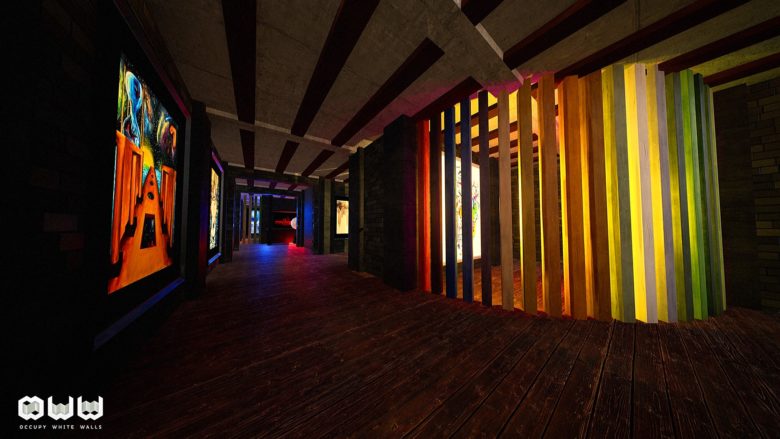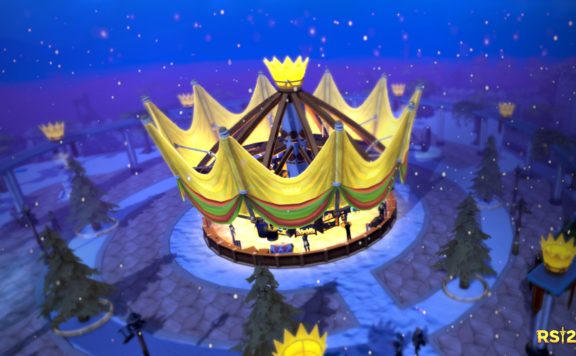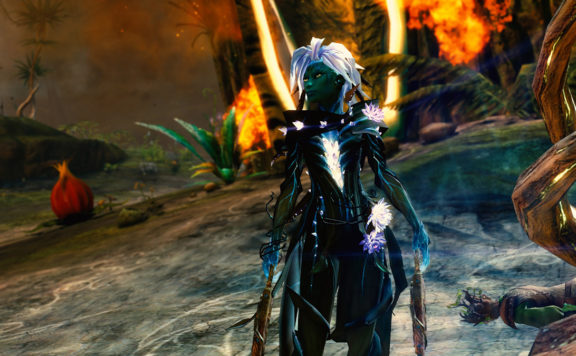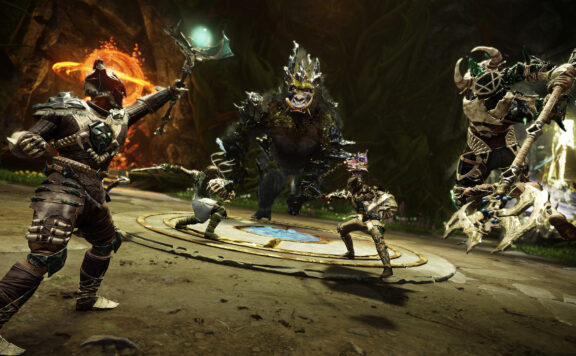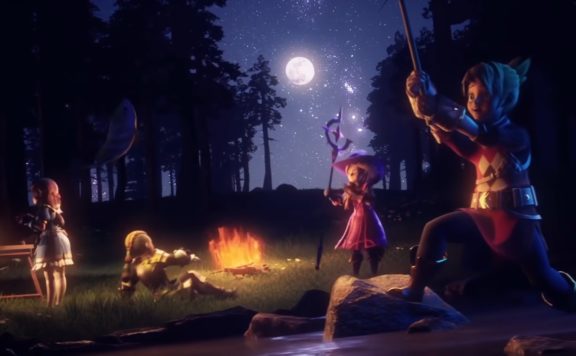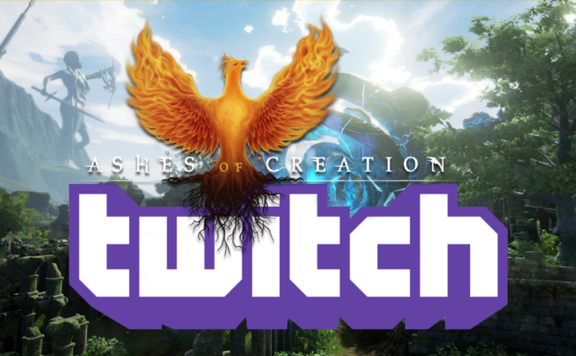Developer KULTURA Ex Machina are about to paint the town red with the launch of MMO Occupy White Walls, and this massive online artistic adventure is unlike any anything you’ve ever seen on Steam.
What happens when you strip the RPG out of the MMO experience. When Mojang meddled with the format and made Minecraft, they spawned a whole new collaborative build your own adventure market that would see it outshine many of its more traditional hack and slash counterparts. Now, one developer is out to switch up your expectations in a different way with the release of Occupy White Walls, an artistic take on the massive online experience. Rather than high fantasy heroes or fearsome dragons, you’re more likely to see Monet and Warhol as this brand new title invites players to build a gallery, pick their collection, and share it with a community of art aficionados.
Initially dropped into Early Access more than four years ago, Occupy White Walls has been under development for a significant period. I took it for an early spin as far back as 2018 and found an interesting diversion from the daily grind. Now, with this full launch, the team behind this fascinating world of hand-crafted player experiences is available on Steam. We returned to our long-forgotten gallery to sweep away the cobwebs, check out what’s new, and take a comprehensive tour Occupy White Walls.
![]()
Character Creation
Unlike genre luminaries like Guild Wars 2 or WoW, Occupy White Walls isn’t out to make a hero of the player. Instead, you’ll become something of a walking canvas. There is no rippling Adonis to tweak or stylized shapes of other character creators, Occupy White Walls completely disregards this concept in favor of a customized mannequin. The bright orange angular, but utterly featureless, biped that became our in-game presence when we opened Occupy White Walls is representative of the approach the rest of the game takes. Players can build out their in-game avatar as the game progresses. Different colors, masks, and other appearance modifications are available for this walking canvas, making it more than just a way to interact with the world. It’s your very first work of art. This approach to player representation in the world might not appeal to anybody used to spending hours in a traditional character creator. There is height slider, no makeup options, no wardrobe filled with glittering armor, and you’re unlikely to make anything that looks particularly heroic. However, as things progress, your palette will expand and interesting extensions to this character unlock. You discover new and interesting changes to each of these bipeds. Masks, paint jobs, and other personalization’s that aren’t present in other character creations take center stage while the game unlocks new options that seems suspiciously like any other gear progression system, just without the always unenviable pull of stats over fashion.
Starting Out
Occupy White Walls quickly puts players in charge of their very own gallery from the off. These instanced areas act much like Trove Worlds or player housing in a big budget MMORPG. They provide a private space to begin building and arrange a portfolio of artwork. anybody starting out for the first time will be dropped into a new instance that provides a pre fab set of unadorned walls as part of a downtown chic studio backdrops. While there are very accessible ways to reconfigure this surrounding, the cut and paste unban aesthetic is a great place to start exploring the in game artwork.
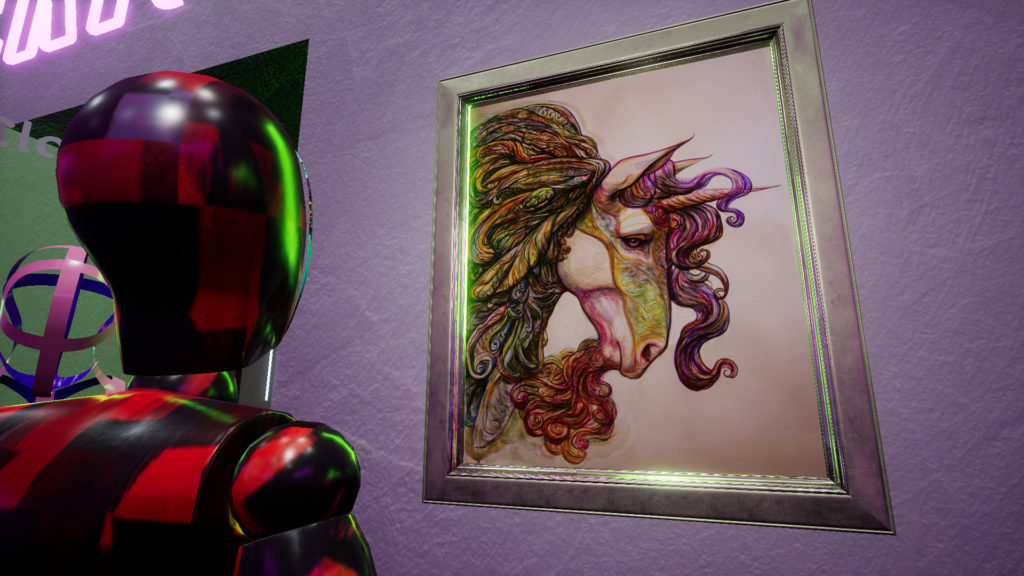
Daisy
If you’re looking to get straight into a world of images, art, sculptures, and curiously creepy mannequin masks, then you’ll need to interact with Occupy White Walls standout feature, the Daisy AI system. This synthetic librarian is the primary portal for players to interact with the reams of art available in Occupy White Walls. Think of this like your social media timeline for art. Accessing the available paintings, photos, and other items via this system allows players to browse, like, and whittle down the number of prospective pieces that will adorn their own gallery. It’s all incredibly simple to access and there is little need to be an art aficionado thanks to this learning catalog.
While anybody can manually plough through the maze of potential pieces, read up on an artist using the in-game codex, and search out the right piece the slow way. Daisy is designed to help those of us that can’t tell the difference between a masterpiece and an irreverent scrawl. By checking out the first few available pictures, liking a few of the options and clicking a prominent ‘More Like This’ button, Daisy will do the leg work for you an present similar options. The Daisy AI is available at the touch of a button, and despite the gimmickry is a great boon to browsing the available artwork. Rather than get lost in the maze of different styles, items, and works, the Daisy AI allows players to simply pick a few items they like and let the all seeing algorithm find something else cool.
As more rt is unveiled, players can buy these pieces to put on their walls,. The core concept is to collate and curate a collection of your very own to show off. Art costs in game currency, but also ties into the in game progression. Buying art and expanding your collection is one of the most obvious ways to unlock progression bonuses. It’s a system, that seems to unblock more artwork, avatar options, and other bonuses as your collection and gallery does. This simplistic economic system also encourages players to open up their collection to the general public. By opening your gallery for the game’s population to visit, the gallery’s coffers will fill in game currency. There’s a basic entrance fee after all. In turn, the entrance donations provide enough cash to buy more artwork, expand your collection of work, gather more in game bonuses, and even renovate your gallery.
Beyond The Canvas
As you might have gathered form the initial avatar creation, Occupy White Walls is more than a splash of color. While the art curation of the game can feel a little bit hands off, your gallery and avatar can be a part of the experience. Much like. Minecraft, Occupy White Walls allows players to play around in a build your own way sandbox. A staggering array of walls, floors, doors, ceilings, windows, decorations, and mor are available to buy, while a range of easy to access building tools simply allow players to cut and paste these elements into game. Sitting somewhere between the Mojang classic and a Lego free for all, the architectural end of Occupy White Walls is almost more immersive than the slightly sedentary aspect of picking art. Here, no Daisy AI is at hand. Instead, you’ll pull up the in-game inventory and use an easy drag and drop system to fill a toolbar with items to slot together. Rather than cast spells, you’ll throw up walls and plaster ceilings, all while playing with light and color to create something that compliments your gallery. This isn’t the only way that Occupy White Walls expands beyond its core gameplay loop. Integrations with Instagram and Soundcloud are two of the most prominent ways that the game attempts to show and tell players about the people behind each piece. There are an incredible number of tools both in game and beyond the walls of this sandbox to help pulls players in, from custom previews using the game’s Zahn Cam to the incredible KULTURA web portal.
It can all seem quite intimidating, taking a blank canvas and pulling together a backdrop that ends up being more than a simple wall to hang art. However, I found the process relaxing. Once you’ve dropped the idea of chasing another level and begin to enjoy creation, the vaguely solitary experience of putting together an exhibition is a deeply satisfying journey.
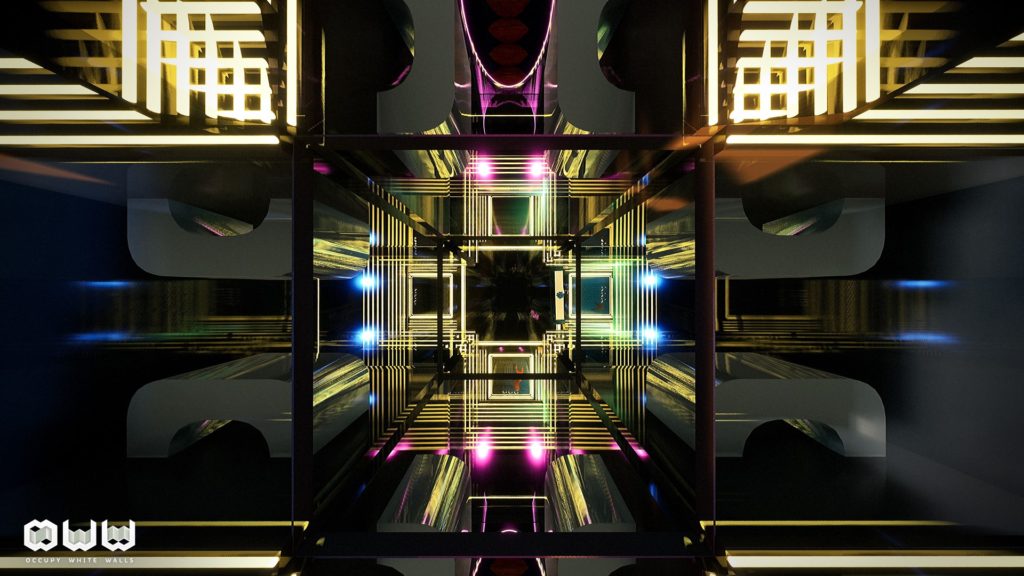
If you’re looking for inspiration for that upcoming show then there is not better way than visiting other galleries developed and hosted by the wider OWW community. This is the other side to the game’s progression model. Other player’s own creations are open for exploration too. Tapping T will bring up the teleport options and give any eager art enthusiasts the option to jump into another open gallery. You’ll notice that some of these are open permanently, and even allow other players to sublet gallery space. It’s wonderful idea and slightly problematic at the same time. The idea that the in-game progression simply exposes players to the wider community, and there are little to no moderation tools for the player to wield is odd. However, just visiting these other spaces reveals the true power of the building system on offer.
Huge imperial palaces, state of the art ne sci-fi spaceships and cool corporate backdrops are just some of the unusual and awe inspiring ideas that are on offer. The end result of a talented impressionist is utterly awe inspiring. They provide tons of inspiration, and the option to pick up some pieces for you own collection. It’s a fantastic reason to go exploring but also an easy way to help out the rest of the community. If you do, then definitely check out the shard spaces of the Piazza de Miracoli and the grandeur of the Glitteresque.
At its best, player galleries create an experience that draws you deeper into the art. Walking through a guided archway as the camera pans down to find a giant pair of bright feline eyes staring back was probably the first moment I understood how immersive and game changing a great player creation can be.
Learning Curve
At its worst, Occupy White Walls can, however, be a perplexingly large and utterly frustrating experience. Like any sandbox title, there are an incredible range of things to do, tools to use, and a mind boggling array building blocks available. Despite the incredible freedom that this gives players, the tools on offer can be something of a mixed bag. The hot bar of deployable objects and the easily accessible click and drag building system is a fantastic way to keep building focused but getting a toolbar full of object is obviously more difficult than finding a picture. Daisy AI is in place to help navigate the art world, and yet the construction of a gallery is an unyielding encyclopedia of pillars, pieces, doorways, stairs, desks, lights, and even more. If you’re not inclined to take considered decisions or sit with a notepad, this might be an intimidating selection. The forced progression loop seems a little at odd with the creative concept, and would benefit from a free form sandbox where players can experiment without having to g generate more currency.
This is indicative of the game as a whole. While the Diasy AI does a fantastic job of streamlining some elements, other obvious additions feel missing. There isn’t an obvious search function in the Daisy UI, for example. Rewards and progression rewards are largely hidden from players. There’s no obvious understanding on how some of these systems interact and I do feel like a more nuanced commentary system and moderation could be in place for each gallery. All of this begins to compound the fact that the new player experience is just a quick set of signposts to each in game menu.
While this might be acceptable for players used to a fully free form environment, the term MMO incurs a certain level of expectation and OOW doesn’t truly prepare players as well as it could. The tutorials re largely an instruction on how to use the in game UI and could work better if given a more structured set of opening tasks, especially as building requires in game currency and comes with a certain degree of trial and error.
The earlier moments in OWW can be something of a frustrating battle to find your way, but that’s a lot like any art. Once you understand that this isn’t about racing to endgame or having your eye on the prize OWW starts to flow. I spent as much time browsing the immersive art galleries of other players as I did in my own shambolic four walls. The integration of Instagram and Twitter profiles to player uploaded art meant I wandered off out of the game, and there isn’t any expectation that you must log back in tomorrow to grab a daily quest. Instead, OWW is about the experience. It’s about taking time to chose your own goals, wander the elaborate pantheon of work on offer and simply enjoying yourself along the way.
It’s not perfect quite yet. Tthe UI systems could use more consistency across the board and the opening moments are truly intimidating. However, once you let go of your own expectations and just enjoy the ride this unusual art MMO will pull you back in when you’re ready to escape the day in a different way. Find out more on the official Occupy White Walls Steam Store page.

